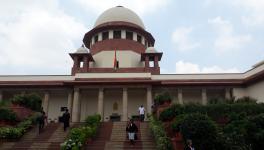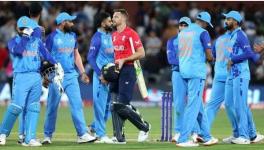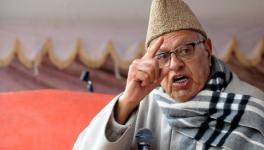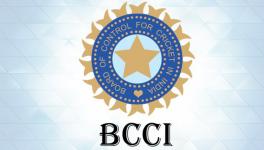Sunil Gavaskar: Destiny’s Child Who Paved Way for Current Test Cricket Success
Sunil Gavaskar.
As the Indian men’s cricket team gets set to play the final of the first-ever International Cricket Council World Test Championship next month, SUNIL FERNANDES looks back at the career of Sunil Gavaskar, the man who paved the way for the success of India in test cricket.
DOORDARSHAN (DD), in its halcyon albeit monopolistic days in the 1980s, commissioned the ‘Freedom Run/Torch of Freedom’ song. The 1980s was the most glorious decade for DD, in terms of its creative content and programming, when it commissioned some of its finest productions – Buniyaad, Hum Log, Tamas, Ramayana, Mahabharata, Nukkad, Mirza Ghalib, Discovery of India, Yeh Jo Hai Zindagi, Wagle ki Duniya, Freedom Song et al.
This two and half minute music video, shot and released in 1988, contained snippets of various Indian athletes and sportspersons of international repute, carrying and relaying something similar to the Olympic torch (little co-incidence that this song came in the year of the Seoul Summer Olympic Games). It had a terrific background score, culminating with the tune of the national anthem as its final musical denouement.
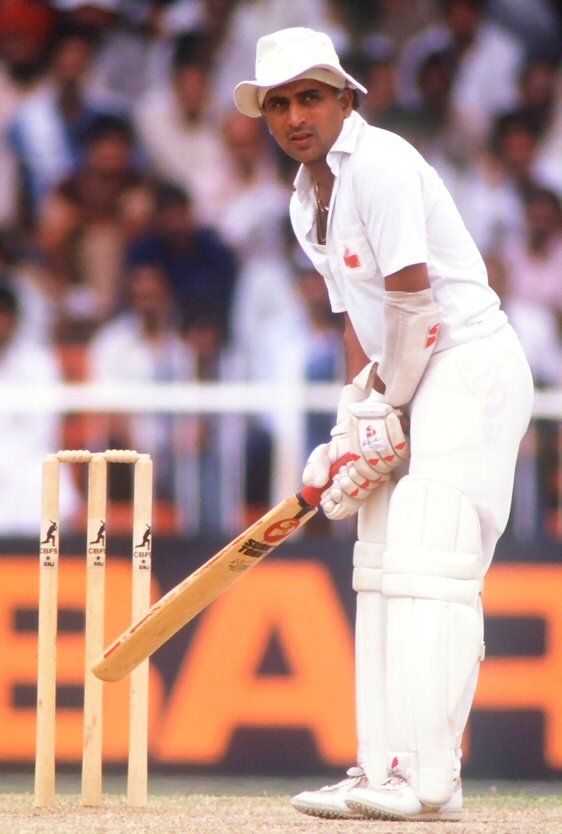
Sunil Gavaskar.
Amongst the 20 odd athletes and sportspersons who graced that video, my personal favourite was Sunil Gavaskar, carrying the torch through torrential rain, the only one to do so in that video.
I don’t know if the makers deliberately intended it but Gavaskar carrying our torch and our pride through hostile rains was the most apt metaphor for his career.
Gavaskar was the finest batsman of his era
India had been blessed with some great cricketers before Gavaskar made his debut versus West Indies in 1971.
India had been playing test cricket for almost four decades, and could proudly claim to be the home of great batsmen like Ranjitsinhji, Vijay Merchant, Lala Amarnath, C.K. Nayudu, and Polly Umrigar.
They all had some fantastic years or a bilateral series where they were near the best batsmen in the world. But they shone fleetingly and not consistently throughout their careers to claim the title of the best batsman of their era
Also read: ‘FINAL FRONTIER’ V ‘THE UNBREAKABLES’
With the sole exception of a certain Sir Issac Vivian Alexander Richards, Sunil Manohar Gavaskar could justifiably claim to be the world’s best batsman of his generation, a distinction he enjoyed for almost the entire duration of his decade-and-a-half long career (1971-1987).
Mind you, it was a career that neatly overlapped with the finest collection of fast bowlers to have ever played international cricket in any era.
No international cricket team today can boast of even one fast bowler who can conceivably replace any one member of the West Indian pace quartet of Malcolm Marshall, Michael Holding, Andy Roberts, and Joel Garner. All of them played at the same time for the same team, and it is against this team that Sunil Gavaskar had his maximum success in international cricket, scoring 13 of his 34 test centuries.
Other than these ‘Four Horsemen of the Apocalypse’, Gavaskar’s generation coincided with the best all-rounders of all time: Ian Botham, Imran Khan, Richard Hadlee and our very own Kapil Dev.
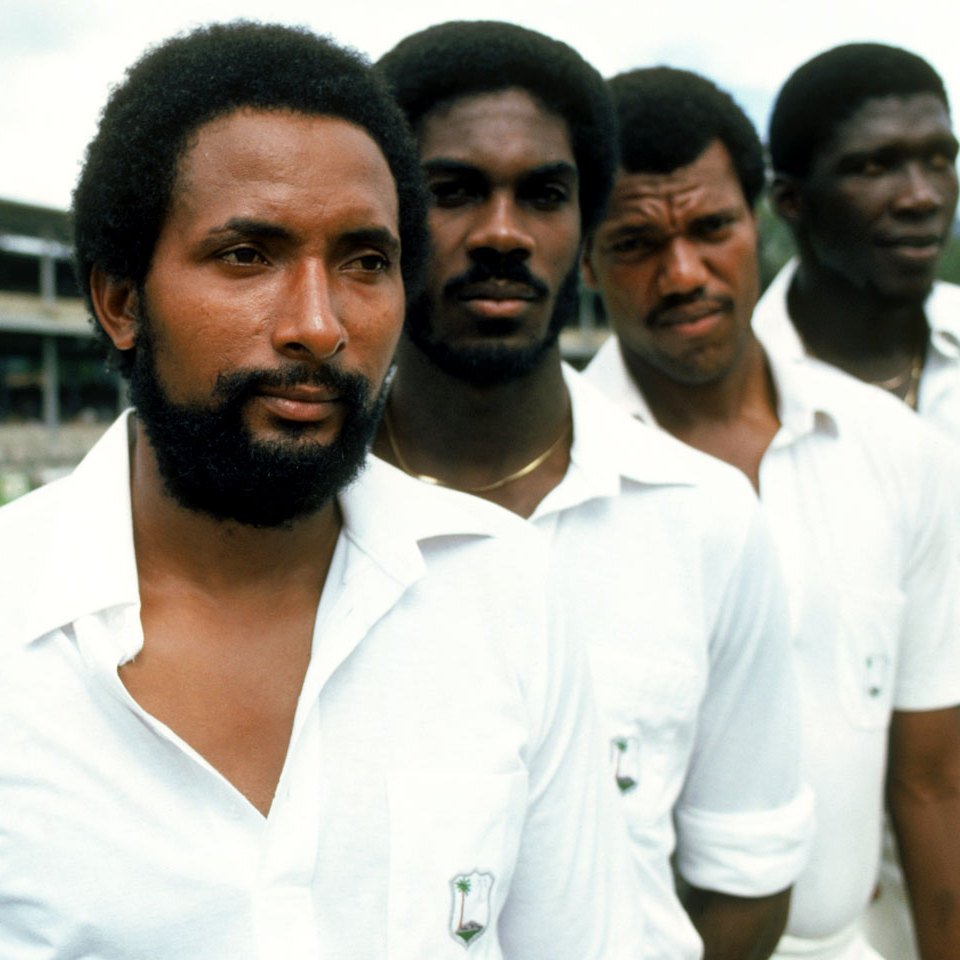
Four horsemen of Apocalypse.
There were others too – Australians Dennis Lillie and Jeff Thomson, of the “If Lillie doesn’t get you, Thommo will” fame; Bob Willis and John Snow from England; Sarfaraz Nawaz and a strapping young Wasim Akram from Pakistan.

Malcolm Marshall. Photo Courtesy: https://www.espncricinfo.com/
And yet Gavaskar consistently weathered them, frequently trumped them and invariably fought against them single-handedly to salvage India’s honours.
Gavaskar’s early life
And to think that India almost never got its best opening batsman ever! Due to an unimaginably horrendous error in the nursing home where he was born, Little Sunil was swapped and given to a Koli (local fisherfolk community of Bombay) woman who too delivered a baby boy at the same time. It was due to the alertness of his uncle, that the mistake was almost immediately rectified, and Little Sunil was retrieved and given to his rightful parents. Indian cricket owes a huge debt of gratitude to that unknown uncle.
Another fortuitous event contributed to Gavaskar opening the innings for the first time ever in his life, in a prestigious inter-school cricket match against some very tough opponents. Gavaskar till then used to bat in the middle order. The designated opener of his school team, who was also the school team captain, didn’t fancy opening the batting against some tall opening fast bowlers of the opposing school team and instead inserted Gavaskar as the opener.
The rest, as they say, was history.
Gavaskar was the apogee as well as the epitome of the ‘Bombay School of Batsmanship’, also known as the ‘Khadoos Batsmanship’. Khadoos literally means miserly/parsimonious, and it was a metaphor to describe the then Bombay style of dogged batsmanship, where the batsman would rather give his kidney before he gave his wicket away!
Career highlights
Though Gavaskar was a part of the 1983 Cricket World Cup-winning team, his greatest moment came two years later, in Australia, when under his captaincy India won the Benson & Hedges World Championship Cup (Older readers might remember Ravi Shastri and his famous Audi car.)
Also read: The first cup is the sweetest: Remembering India’s 1983 win, 35 years on
At an individual level, he broke Sir Don Bradman’s coveted long-standing record for the most number of Test Centuries (29). He became the first batsman to score 10,000 Test runs, ended his career as the world’s highest Test runs scorer (10,122 runs), the first Indian to do so (Sachin Tendulkar was the second).
Arguably, he played his finest innings in the last test match innings of his career, which is a personal favourite of this writer. He scored a stellar 96 runs in the fourth innings, on the fifth day of the fifth test match, in a heart-breaking run chase against Pakistan in Bangalore in 1987.
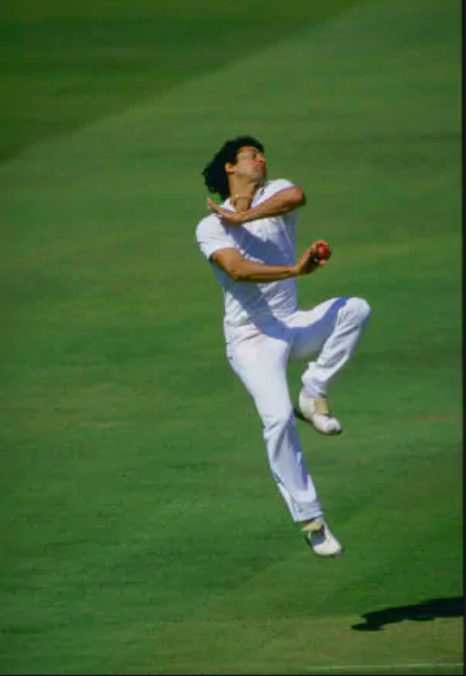
Imran Khan.
By the end of the fourth day’s play, Pakistan was in pole position. Their captain, Imran Khan, was at the peak of his powers, and he had made beating India in India one of the key goals of his outstanding career. The last day’s test match pitch in Bangalore was a worn-out mine-field, and there was no chance that India would score the 221 runs needed to win the match and the series.
The local media could not comprehend why the usually boisterous Pakistani spin duo of left-arm spin bowler Iqbal Qasim and off-spin bowler Tauseef Ahmed was sombre and subdued on the eve of the final day. “Woh Baba Adam ab tak khel raha hai,” (‘the old man is still playing’) was their terse reply, alluding to 38-year-old Sunil Gavaskar.

Iqbal Qasim and Tauseef Ahmad.
Gavaskar was dismissed after having scored 96 runs, the eighth wicket to fall in the Indian innings. India eventually lost the match by 16 runs, and the test match series 0-1, giving Imran his much-cherished Test series win in India. It was also Gavaskar’s last Test match innings.

Sachin Tendulkar had stroked a masterful 136 runs in the 1999 Chennai Test against Pakistan.
Photo Courtesy: www.sportskeeda.com
A dozen years later, Indian cricket fans would suffer a similar heartbreak. One of Tendulkar’s best ever test match innings of 136 runs against Pakistan in the fourth innings of the fifth day of a test match in Chennai wasn’t enough, as India lost to a Wasim Akram-led Pakistan team by 12 runs, leaving Tendulkar in disconsolate tears.
Gavaskar, Tendulkar and Virat Kohli can arguably be called the holy trinity of Indian batsmanship across all eras. But there would have been no Kohli if Tendulkar hadn’t been there, and there would have been no Tendulkar if Gavaskar wasn’t there.

Virat Kohli ( holy Trinity of Indian cricket).
India embarks on its journey to play the final of the first-ever International Cricket Council World Test Championship in England against New Zealand next month. Let us remember that this remarkable journey began in the narrow by-lanes of Chikalwadi, Mumbai.
Postscript: This writer owes his name to Sunil Gavaskar. When I was born in 1976, my father was one of the millions of ardent Gavaskar fans. So naming his firstborn as ‘Sunil’ was a no-brainer. Our similarities began and, sadly for me, ended there itself.
(Sunil Fernandes is an Advocate-on-Record, practising in the Supreme Court of India. The views expressed are personal.)
Get the latest reports & analysis with people's perspective on Protests, movements & deep analytical videos, discussions of the current affairs in your Telegram app. Subscribe to NewsClick's Telegram channel & get Real-Time updates on stories, as they get published on our website.











